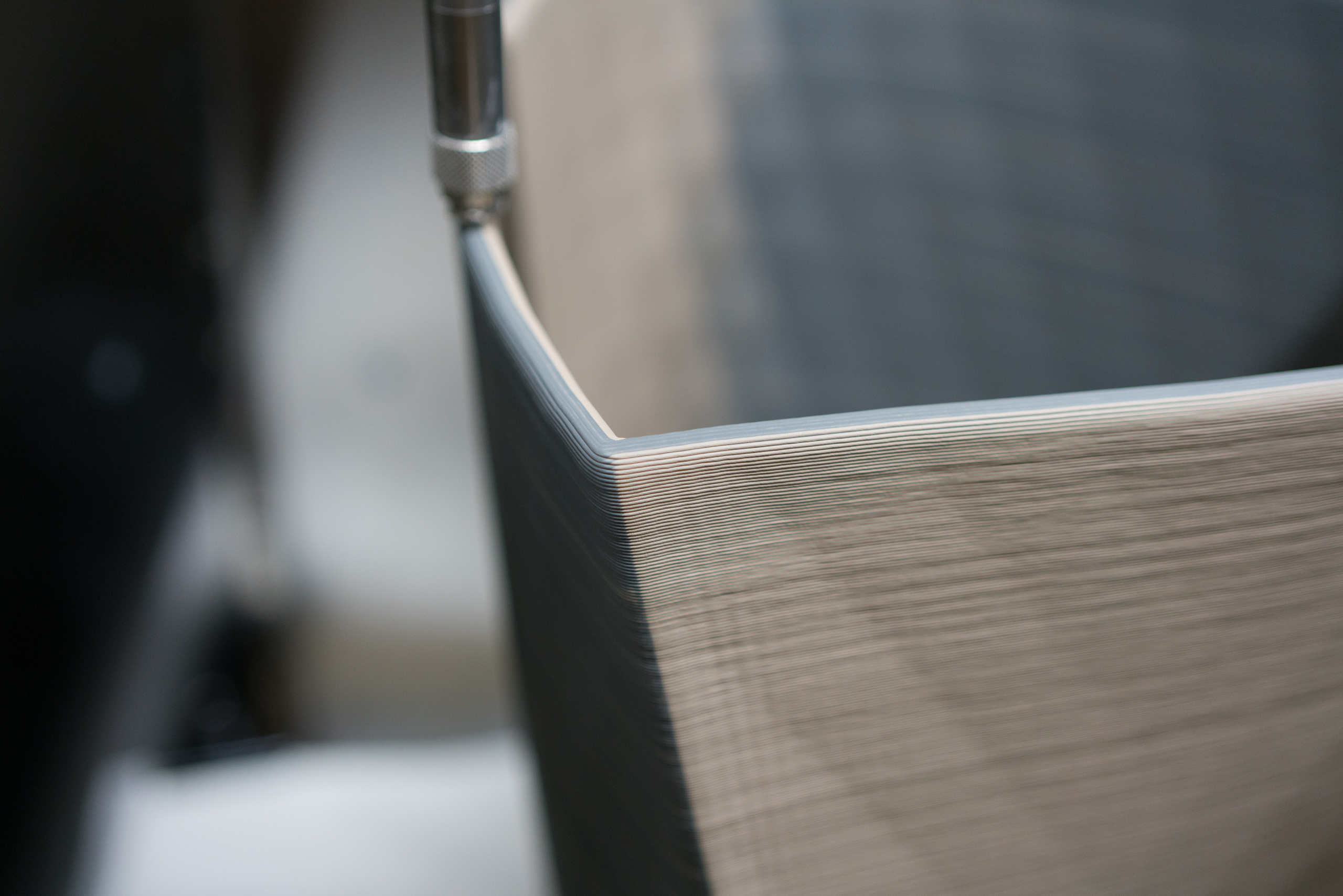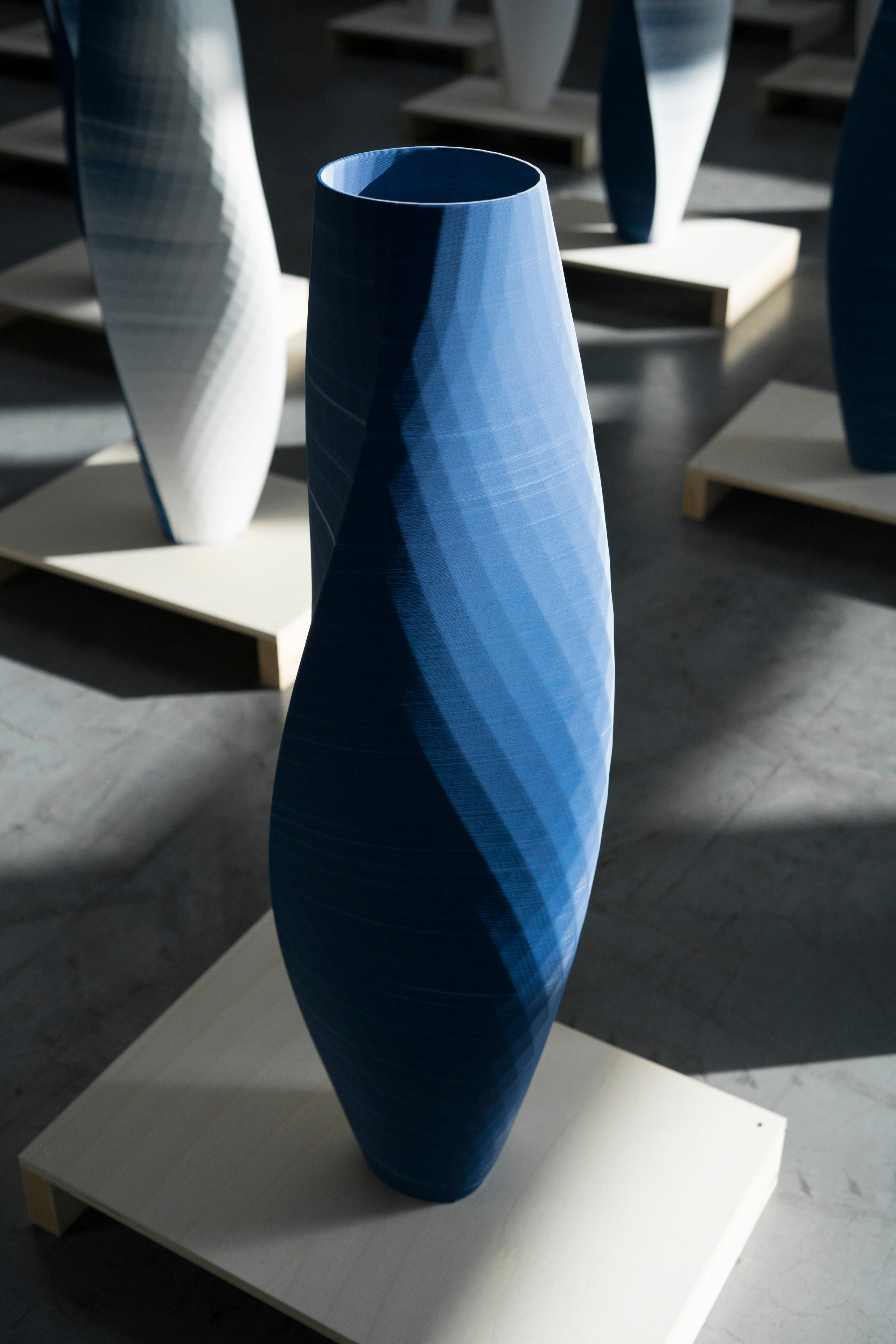Ontdek de collectie
Kunstmuseum Den Haag has a treasure chamber of over 160.000 pieces of art. Here we work on making the highlights from this collection available online.
Olivier van Herpt
Porcelain Blues
20 May - 17 September 2023
After twenty-six attempts, Olivier van Herpt (1989) finally succeeded in creating an asymmetrical object more than a metre high, formally perfect and 3D-printed from pure porcelain. For three years, Van Herpt retreated to a new studio to gain full control of his material and technique. The result: porcelain crafted like never before. The Kunstmuseum Den Haag is now showing all of Van Herpt’s attempts – and of course the end result – for the first time.
Van Herpt graduated from the Design Academy Eindhoven in 2014 with a 3D printer that can print with ready-to-use pottery clay. After receiving a commission from the Kunstmuseum Den Haag in 2016, he developed this technique further to enable printing with porcelain. In the autumn of 2019, he discovered that he could print a porcelain form with a large overhang so thin and light that it did not collapse during the substantial shrinkage in the kiln. For Van Herpt, it was the evidence he needed that it should be possible to produce a large, organic, asymmetrical shape of more than a metre in height.
This is a first in the history of porcelain. Traditionally, most large porcelain objects have been made from clay with a less pure composition. To ensure solidity and because of the method of throwing on a potter’s wheel, ceramicists were restricted to symmetrical, radial forms. Van Herpt was convinced that his new technique would enable him to make a large organic form from pure porcelain, without cracks or deformations, and decided to test his discovery on a larger scale. After successfully creating an example of no less than 1.5 metres in height, things unfortunately went wrong: due to its asymmetrical shape, the object collapsed in the kiln. Instead of adjusting the design, which would have been the easy solution, Van Herpt decided to fine-tune the entire process.
3D-Printing
One of the biggest challenges is that the larger the design, the more it shrinks during firing. These large objects can shrink by more than 30 cm! This forced Van Herpt to look for a perfect balance between lightness and solidity during the printing. After several failed attempts, it turned out that a minimal variation in wall thickness ultimately made it possible to keep the shape of the design intact during the firing process.

Drying
Van Herpt then discovered that hairline cracks appeared during the drying process. This is because the moisture in the clay does not escape from the object evenly, causing tension and pressure differences between the wall and the base of the object. To prevent this, he built special drying cabinets that extended the drying process to no fewer than ten days. This allows the objects to lose moisture evenly over the entire surface without creating areas of pressure.
Firing
When the kiln reaches its highest temperature (approximately 1350oC), the clay minerals melt, making the porcelain almost liquid. In this short period of time, the object shrinks the fastest. Van Herpt discovered that, with these large objects, even small differences in temperature can cause the object to deform in the direction of the area with the greatest heat. To combat this phenomenon, Van Herpt made a so-called ‘saggar’, a ceramic container made up of a number of stacked rings that is placed as a cylinder around the object. This has the effect of creating a kiln within a kiln, keeping temperature differences to a minimum.
Colours
Once Van Herpt had mastered the forming, drying and firing, he focused on the colour of his objects by adding cobalt oxide. Because cobalt lowers the melting point of porcelain, applying it unevenly could potentially jeopardise all his previous efforts. As a solution to this problem, Van Herpt developed a print head with two clay streams that form and colour the object simultaneously. The shape of the object and the position of the printing head within the machine in relation to the intersection of the two clay streams determines when the blue tint appears on the surface or remains hidden. In this way, each phase in the printing process produces different shades of blue, while the cobalt concentration is evenly distributed throughout the work.
Perfection
The final result of Van Herpt’s determination is a pair of objects that mirror each other perfectly in form and colour. The set of objects is not only a nod to the history of ceramics but is also proof that he has finally gained complete control of his materials and technique. For van Herpt, however, all twenty-six objects are equally important. As a whole, they represent a tangible record of his research and simultaneously embody his unwavering commitment to broadening the horizons of porcelain.

